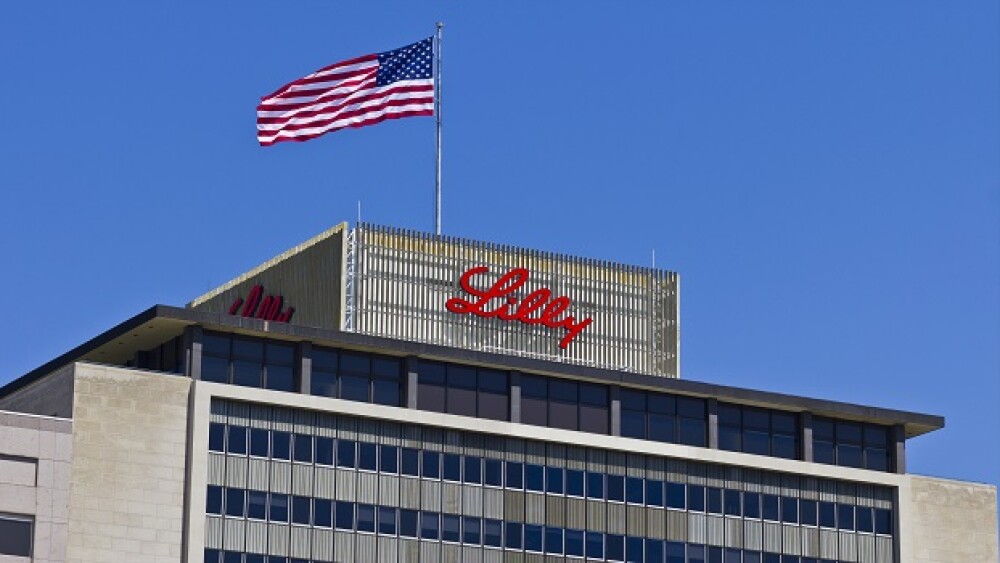The company indicated it was dropping LY2606368, prexasertib, a CHK1 drug in Phase II, and LY3023414, a PI3k/mTOR inhibitor that was also in Phase II.
Jonathan Weiss / Shutterstock.com
For its first-quarter earnings report, Eli Lilly and Company reported $5.0922 billion in revenue, an overall increase of 3% from the same period in 2018. Although sales of its diabetes drug Trulicity were still good, bringing in $879.7 million, up 30% from $678.3 million in the first quarter of 2018, it was below expectations, largely based on lower prices and changes in estimates to rebates and discounts. Analysts’ projections were for $952 million.
“Lilly continued to execute well against our strategic priorities in the first quarter of 2019,” stated David A. Ricks, Lilly’s chairman and chief executive officer. “We delivered volume-based revenue growth despite the loss of patent exclusivity for several products, increased our investments in new brands, and further funded our pipeline of potential new medicines.”
The company also completed two major deals, wrapping up the disposition of its ownership in Elanco Animal Health and acquiring Loxo Oncology. Ricks said this “adds a potential 2020 launch and strengthens our oncology pipeline of precision medicines for patients with difficult to treat cancers.”
Which is good, since it had to withdraw Lartruvo (olaratumab) from the market for treatment of advanced soft tissue sarcoma (STS). On April 25 it indicated it was establishing an Access Program for patients currently receiving the drug who may wish to continue.
The withdrawal came after the failure of the Phase III ANNOUNCE clinical trial, where Lartruvo didn’t improve patient survival. The trial was a randomized, double-blind, Phase III of Lartruvo in combination with doxorubicin, followed by Lartruvo alone compared to doxorubicin plus placebo followed by placebo in patients with advanced or metastatic STS. The two primary endpoints were overall survival (OS) in the intent-to-treat (ITT) population and OS in the leiomyosarcoma (LMS) sub-population.
Lartruvo was approved in the U.S. and Europe in 2016 on the basis of a smaller mid-stage clinical trial under an accelerated approval program. The results of the ANNOUNCE trial were expected to verify the data but did not. The company has been working with the U.S. Food and Drug Administration (FDA) and the European Medicines Agency (EMA) on next steps and decided to withdraw the drug from global markets entirely.
The company indicated it was dropping LY2606368, prexasertib, a CHK1 drug in Phase II, and LY3023414, a PI3k/mTOR inhibitor that was also in Phase II. Both drugs were highlighted in 2017 as moving forward for the company’s oncology pipeline. Prexasertib had been in more than a dozen trials alone or in combinations for several solid tumors and blood cancers. The CHK1 drug was in a combination trial with Astellas and Medivation’s Xtandi (enzalutamide) for prostate cancer.
Other drugs, however, had strong sales, including plaque psoriasis drug Taltz, which showed an increase of 72% for the quarter, insulin product Basaglar (51%), and type 2 diabetes drug Jardiance (35%). Cialis, for erectile dysfunction, however, took a big hit, drooping 38% for the quarter. However, like with Trulicity, they did not always meet analysts’ projections. For example, Taltz also did not meet estimates.
Vamil Divan, an analyst with Credit Suisse, indicated, “The results will … lead to some pressure on Lilly shares today given the underperformance of Trulicity and Taltz.”
The company revised its 2019 revenue projections to $22.0 billion to $22.5 billion, lower than an earlier projection of $25.1 billion to $25.6 billion. Analysts had projected $22.17 billion.
Net income tripled to $4.24 billion, or $4.31 per share, benefitting from the Elanco spin-off.





